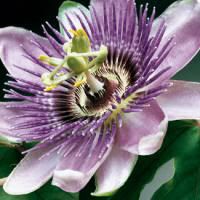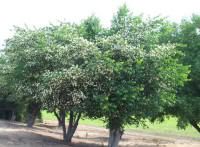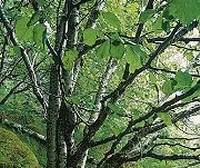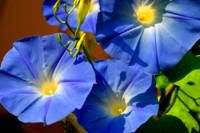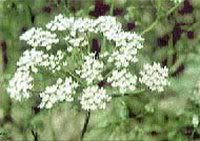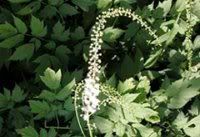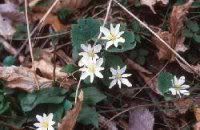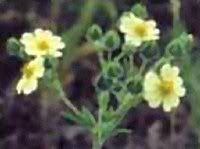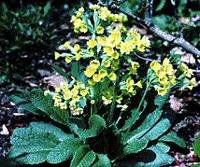I've always been fascinated by first aid kits. As a child I loved going to sporting goods stores where I would run to the camping department and would (clandestinely) open the first aid kits. I was always amazed at what was inside, and what wasn't inside. Always, the kits had Band-Aids, surgical tape, bandages, and an ointment. Some kits had a razor blade and suction cup for snake bite (I never met anyone who had used this). Some kits had aspirin. First aid seemed to mean cuts and scrapes and possible snake bite.
I'm still fascinated by first aid kits, but have changed my question from "what's inside?" to "what do I need to be prepared?"
Things I needed to be prepared for have included:
- Cuts and scrapes
- Burns
- Bug bites
- Contact rashes
- Upset stomach
- Diarrhea
- Muscle aches
- Bleeding and Bruises
- Poison Ivy and Poison Oak rash
- Sore throat, colds, upper respiratory problems
- (So far, no snake bites)
A great first aid kit, would handle more than just cuts and scrapes. Ideally, I would not include any chemical preparations. The medicines would be all-natural, potent and effective. I would include the following:
1. Antimicrobial healing salve. A comfrey based salve, including herbs such as plantain, St. John's wort, calendula and Echinacea, will soothe, accelerate healing, and disinfect. Essential oils such as lavender and rosemary strengthen the effects. Use for any breaks in the skin and for burns. (Do not use initially on puncture wounds, use an antiseptic such as Echinacea tincture instead)
2. Insect repellant. Essential oils (lavender, citronella, eucalyptus, cedarwood, lemon grass, pennyroyal) suspended in a base of water and alcohol, are pleasant smelling to humans and noxious to bugs. The combinations work better than the single oils. Make your own or use the all-natural commercial preparations. Note that eating sugar and sweets increases your attractiveness to many insects! (Caution: Although pennyroyal essential oil is widely used for insect repellants, I recommend against this use. It can be toxic even in moderate doses and is specifically contraindicated for so many people - especially pregnant women. It is powerful and can affect people and pets in the vicinity of the user.)
3. Muscle aches and pains liniment for external use: Arnica, witch hazel and St. John's Wort tinctures in combination and essential oils of camphor, eucalyptus, rosemary and clove bud are all excellent. Note that some people are sensitive to arnica: STOP if adverse symptoms result. Do not use arnica on broken skin.
4. Poison Ivy and Poison Oak liniment for external use. Jewelweed (impatiens) specifically neutralizes the Rhus toxin and works well. Use fresh or tinctured, but jewelweed can be hard to find. Other remedies include grindelia, combined with Echinacea, calendula and white oak bark.
5. Echinacea tincture. Don't leave home without it. Internal and external antibiotic, provides temporary boost to the immune system. Good in case a cold threatens. Antidotes poison.
6. Ginger capsules. Great remedy for tummy upsets, including motion sickness, morning sickness and gas. Helpful for menstrual cramps. Alternatives: fennel and peppermint.
7. Bentonite clay or charcoal tablets, for diarrhea. These are to assist with detoxification, in case of poisoning. (Of charcoal, take 4 every hour, of bentonite clay; take 1 teaspoon in water, 3-4 times per day). Drink a lot of water. Helpful herbs include blackberry root or leaf (root is preferred for its greater astringency: simmer root for 20-40 minutes or steep leaf for tea for 10-30 minutes). Similarly, use wild strawberry root or leaf. Raspberry leaf provides a very mild remedy for diarrhea. Slippery elm tea also provides a fine remedy (but is still an endangered plant!). Blackberry and strawberry root and leaf also will reduce internal hemorrhaging. Cooked white rice works wonders at reducing diarrhea.
8. Meadowsweet tincture or aspirin. Fast acting, anti-inflammatory, pain-killers. Willow bark tea works well.
9. Thyme essential oil. A "must bring" for camping. Two drops in 4 ounces of water for mouthwash for toothache or sore throat. Same recipe used externally for crabs, lice, and all external parasites. Two drops placed in recently boiled water, inhale the steam for cold, flu, or bronchitis.
10. Rescue Remedy or Five Flower Formula. Outstanding emotional support for all trauma. Very safe. Don't leave home without it.
11. Cayenne capsules. Proven styptic. Open and apply externally to stop bleeding. (Yes, it does burn, but it works). It will also warm cold feet, sprinkled inside your boots. Alternative styptics: comfrey and yarrow. Comfrey is perhaps the finest internal anti-hemorrhage we have and is great externally as well, but it recently has come under FDA criticism (read some good herbal texts and decide for yourself. Me, I think it's a great
herb).
12. Bug bite and itch relief. Witch hazel, plantain, grindelia, comfrey and St. John's Wort all provide relief from insect bites and general itching. Tinctured combinations of these seem to work best and are applied directly to the skin. Juice from the plantain is mildly effective and it grows throughout this region (just crumple the leaves and rub onto the skin). Lavender essential oil may be applied directly to the skin and works well. It enhances any tincture combination.
13. Relief from bruises. I think of these as wounds where the skin is unbroken, often accompanied by discoloration. Useful herbs, typically applied topically in tincture form, include Tienchi ginseng, hyssop, myrrh gum, prickly ash bark, cayenne, calendula, comfrey and arnica. Make your own, use the all-natural commercial preparations, or obtain a "dit dat jao" from a Chinese herbalist. Helichrysum italicum essential oil, applied neat, works very well and is non-irritating. Application of the tincture combination, jao, or essential oil immediately following the bruise may prevent the bruise from forming. Do not use these remedies on the eyes or mucous membranes and wash thoroughly after use.
14. The hardware: Band Aids, Bandages, 1/2 inch surgical tape, small scissors, single edged razor blade, tweezers, cold pack (cools on impact) ace bandage, bandana. Eye cup (or shot glass). Carry case (soft sided, waterproof) for the kit.
So go ahead, assemble a kit for yourself, your friends, or your family. They make great gifts. Remember, these are suggestions only and are based upon the assumption that any first aid kit will have space and weight limitations. There are other choices for all of the categories given.
If you are sensitive to any of the suggested remedies, don't use them. Read, listen to your body, and educate yourself. Use common sense and seek additional assistance when necessary.
(Oh yes, the Echinacea is helpful when it comes to snakebite.)



